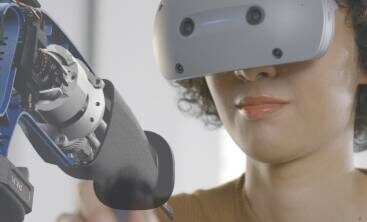How a fennel bulb helped engineers innovate product design

Generative design leverages algorithms from existing design knowledge with autonomous computing, which evaluates all possible permutations of a design given a set of constraints.
It allows designers and engineers to innovate product design. Their design space exploration capabilities expand now that they can evaluate more options than using traditional design tools, and even more options than would be considered by engineers alone. It provides transformational benefits that can be easily incorporated into a company’s product design process.
The generative design process is similar to Mother Nature’s proven evolutionary approach, only much faster. In fact, generative design allows designers and engineers to use nature’s creations as inspiration not just to innovate product design, but to solve complex engineering challenges.
Enter one such piece of inspiration from nature: the fennel bulb.

Using a fennel bulb to innovate product design
What does a fennel bulb have to do with generative design?
As it turns out, the fennel bulb inspired a recent Siemens research project to reimagine a more elegant design. This design would reduce overall manufacturing effort, but still maintain functional performance of a high-temperature burner system that extracts usable fuel from messy, leftover reactants in the fuel refining process.
The current system, which contains a complex network of channels to transfer reactants and cooling water, was made by welding together many pieces of pipes and machined components. The challenge was to figure out how this could be redesigned to reduce its costs.
The a-ha moment during the design space exploration came when Siemens engineers used an additive manufacturing thought process. As a design tool, additive manufacturing empowers engineers to create shapes that would could never be made using traditional manufacturing methods.
Siemens engineers looked to biomimicry, the process of looking to nature as inspiration for solving an engineering challenge, to reimagine the burner shape in the form of a fennel bulb and 3D print it. This was entirely designed using NX.
The team quickly achieved the optimal design by letting the computer do much of the work using Generative Design. They did it by linking the parametric model in NX to STAR-CCM+ for computational fluid dynamics (CFD) analysis, and then HEEDS to explore the design space of possible shapes.
The finished result was a much more elegant design. All the complexity was transferred to the 3D printed burner tip. Through this, a significant reduction in manufacturing effort and cost could be achieved including a significant reduction in assembly complexity and reduced size.

In addition, they were able to realize a number of improvements opportunities across design, manufacturing and the business, including reducing the number of parts and welds by over 50 percent during the manufacturing process, an adjustable design to meet customer-specific combustion requirements and getting the product to the market faster.
A new competitive advantage to innovate product design
This is only one of many examples of how different tools can bring more innovation and ideas than ever before. By bringing together human intelligence, high-performance computing and artificial intelligence, companies have the opportunity to create an end-to-end generative design process that delivers innovative, leading and differentiating products to market more quickly.
About the author
Tod Parrella is the product manager responsible for NX Design. He has worked in the NX Product Management organization for more than 11 years and is responsible for the development of a number of NX CAD innovations including Synchronous Modeling, NX Realize Shape Subdivision Modeling and most recently Convergent Modeling. Tod is also the Design lead for the NX Generative Design initiative which includes investments in Bionic & Lightweight Structures Design and Design for Additive Manufacturing. In addition to his role as Product Manager for NX Design, Tod also manages a small industry product management team responsible for driving industry requirements into the NX Design planning process.


